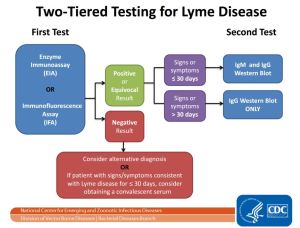It’s TICK season!
Go get those handy essential oils out and fight off those nasty bugs…And please don’t assume you’ll never get bit. According to the CDC, each year there are nearly 30,000 confirmed cases of Lyme disease across the United States; but the total may be as high as 300,000 and the numbers are climbing quickly with this year already being on record pace. Getting bit by a tick can be life threatening and it’s effect even permanent. The best way to counteract this is PREVENTION because as I always say, Prevention is better than cure!
So what can you do ABOUT TICKS?
Use essential oils before you go outside and make sure to cover your head with a hat so they don’t fall in your hair. Long pants and sleeves are also a good idea, but not always feasible. I know that the right combination of essential oils can ward off not only ticks, but mosquitoes as well. What are essential oils anyways? They are natural oils of a plant, and believe it or not, bugs don’t always like them. I have written about ticks before so you’ll find my recipe for an easy DIY bug spray just below. Remember you may need to reapply your DIY bug spray if you’re out longer than 3 hours…And don’t forget to spray the dog too!
BTW, Here’s a map of the tick population currently in the U. S.
And below is the CDC’s list of possible tick related diseases in the United States:
- Anaplasmosis is transmitted to humans by tick bites primarily from the blacklegged tick (Ixodes scapularis) in the northeastern and upper midwestern U.S. and the western blacklegged tick (Ixodes pacificus) along the Pacific coast.
- Babesiosis is caused by microscopic parasites that infect red blood cells. Most human cases of babesiosis in the U.S. are caused by Babesia microti. Babesia microti is transmitted by the blacklegged tick (Ixodes scapularis) and is found primarily in the northeast and upper midwest.
- Borrelia mayonii infection has recently been described as a cause of illness in the upper midwestern United States. It has been found in blacklegged ticks (Ixodes scapularis) in Minnesota and Wisconsin. Borrelia mayonii is a new species and is the only species besides B. burgdorferi known to cause Lyme disease in North America.
- Borrelia miyamotoi infection has recently been described as a cause of illness in the U.S. It is transmitted by the blacklegged tick (Ixodes scapularis) and has a range similar to that of Lyme disease.
- Colorado tick fever is caused by a virus transmitted by the Rocky Mountain wood tick (Dermacentor andersoni). It occurs in the the Rocky Mountain states at elevations of 4,000 to 10,500 feet.
- Ehrlichiosis is transmitted to humans by the lone star tick (Ambylomma americanum), found primarily in the southcentral and eastern U.S.
- Heartland virus infection has been identified in eight patients in Missouri and Tennessee as of March 2014. Studies suggest that Lone Star ticks may transmit the virus. It is unknown if the virus may be found in other areas of the U.S.
- Lyme disease is transmitted by the blacklegged tick (Ixodes scapularis) in the northeastern U.S. and upper midwestern U.S. and the western blacklegged tick (Ixodes pacificus) along the Pacific coast. The deer tick spreads the disease and attaches itself to people usually in wooded areas. They are very tiny and attach to any part of the body, particularly the groin, armpit and scalp. The tick must be attached for 36-48 hours or more before the Lyme disease bacterium can be transmitted. Symptoms don’t always manifest themselves, but they include: fever, headache, fatigue and even a “bulls-eye” rash. These symptoms can occur anywhere from three to thirty days. If this disease and infection is left untreated, the immune system is comprised and many conditions begin to develop in the body quickly, and it is extremely difficult to treat. Symptoms may later evolve into conditions of the joints, heart, central nervous system and more. However, if it is caught quickly, antibiotics can be used to treat the infection and heal it. I personally believe time is of the essence.
- Below is the Two-Tiered Testing recommended by the CDC to determine if one has been infected. It is recommended to have a 2-4 week course of antibiotics.

- Powassan disease is transmitted by the blacklegged tick (Ixodes scapularis) and the groundhog tick (Ixodes cookei). Cases have been reported primarily from northeastern states and the Great Lakes region.
- Rickettsia parkeri rickettsiosis is transmitted to humans by the Gulf Coast tick (Amblyomma maculatum).
- Rocky Mountain spotted fever (RMSF) is transmitted by the American dog tick (Dermacentor variabilis), Rocky Mountain wood tick (Dermacentor andersoni), and the brown dog tick (Rhipicephalus sangunineus) in the U.S. The brown dog tick and other tick species are associated with RMSF in Central and South America.
- STARI (Southern tick-associated rash illness) is transmitted via bites from the lone star tick (Ambylomma americanum), found in the southeastern and eastern U.S.
- Tickborne relapsing fever (TBRF) is transmitted to humans through the bite of infected soft ticks. TBRF has been reported in 15 states: Arizona, California, Colorado, Idaho, Kansas, Montana, Nevada, New Mexico, Ohio, Oklahoma, Oregon, Texas, Utah, Washington, and Wyoming and is associated with sleeping in rustic cabins and vacation homes.
- Tularemia is transmitted to humans by the dog tick (Dermacentor variabilis), the wood tick (Dermacentor andersoni), and the lone star tick (Amblyomma americanum). Tularemia occurs throughout the U.S.
- 364D rickettsiosis (Rickettsia phillipi, proposed) is transmitted to humans by the Pacific Coast tick (Dermacentor occidentalis ticks). This is a new disease that has been found in California.
THE BOTTOM LINE: You DON’T want to get bit…Cover up, use the oils and then do a thorough tick check.
Here are 3 Natural Ways to Fight Lyme Disease that have been recommended by professionals or actual people who have contracted this terrible disease:
- Change your diet to HEALTHY foods. Please see my post on What Does Eating Healthy Really Mean.
- Check out my Natural First Aid Kit which gives several ideas including: Oil of Oregano, Silver Sol, Apple Cider Vinegar, Garlic and Willard’s Water.
- Cannabis Oil – Now I would have never thought of this until I read this girl’s story. It is an amazing story of total recovery, having went from Lyme disease, Lupus, Mycoplasma, Bartonella, seizures and Babesia to complete healing.
And for the perfect tick fighting repellent and recipe, click this link below:
Natural Tick and Mosquito Repellent


Leave a Reply